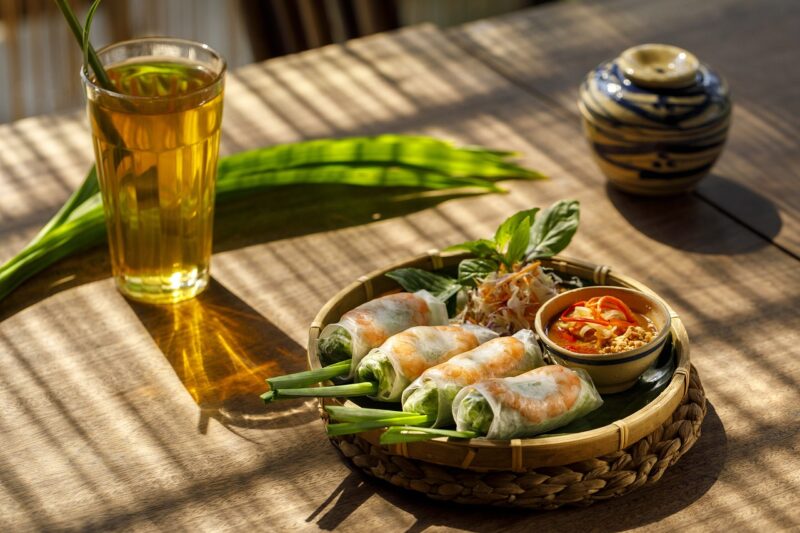
Throughout history, cultures around the globe have associated specific foods with luck, prosperity, and good fortune. These beliefs often stem from ancient traditions, religious practices, and deeply rooted folklore that has been passed down through generations. This article delves into the fascinating world of food symbolism, exploring why certain foods are believed to attract prosperity and how these beliefs vary across cultures.
1. The Cultural Significance of Food Symbolism
Culture plays a pivotal role in shaping our perceptions of food. Many cultures incorporate rituals and traditions that elevate certain foods to symbols of hope and success. By examining these cultural significances, we uncover a rich tapestry of beliefs regarding luck and prosperity.
**Culinary Customs**: Various traditions may involve lucky foods being served on special occasions, particularly during celebrations like New Year’s, weddings, or harvest festivals.
**Mythology and Folklore**: Many belief systems are intertwined with the mythology of a culture, where gods and spirits are often associated with certain foods. For example, in some Asian cultures, rice is not just a staple but also a symbol of abundance and fertility.
**Religious Significance**: Foods can have a spiritual layer, where certain dishes represent blessings or are offered in prayer. These beliefs often enhance the perceived power of the foods in bringing good fortune.
2. Foods Believed to Bring Luck Around the World
##### *2.1. Grapes: A Symbol of Good Fortune in Spain*
In Spain, particularly during the New Year’s Eve celebrations, eating twelve grapes at the stroke of midnight is a tradition thought to bring good luck for each month of the upcoming year. This custom exemplifies the connection between food and temporal fortune, reinforcing the idea of starting the new year with positive intentions and plenty of blessings.
##### *2.2. Lentils: The Prosperity Seed in Italy*
In Italy, lentils symbolize wealth and prosperity, especially when served on New Year’s Day. The shape of lentils resembles coins, making them represent financial gain and abundance. Italians believe that the more lentils you eat, the more money you will have in the coming year.
##### *2.3. Fish: The Good Fortune Food in Many Cultures*
Fish is considered a lucky food in numerous cultures. For instance, in Chinese customs, fish is served during the New Year’s celebration because the word for fish (魚, yú) sounds like the word for surplus (餘, yú), symbolizing abundance and prosperity. Similarly, in Nordic cultures, certain fish dishes are also believed to bring luck due to their association with the sea’s bounties.
##### *2.4. Pork: The Symbol of Optimism in Germany*
In Germany, eating pork on New Year’s Day is thought to bring good luck. The pig is seen as a symbol of diligence and prosperity because pigs root around in the dirt to find food, which metaphorically means they work hard for their success. It’s believed that eating pork can lead to a fruitful year ahead.
##### *2.5. Noodles: Long Life in Asian Cultures*
In several Asian cultures, long noodles symbolize longevity and happiness. For instance, during birthdays, it’s customary to serve long noodles to represent a wish for a long life. The act of slurping these noodles is also a sign of enjoyment and can be interpreted as a blessing for good fortune.
3. The Psychology Behind Food Symbolism
The belief in lucky foods is not only a social and cultural phenomenon but also a psychological one. This section explores how the human mind processes food symbolism, leading to various beliefs and behaviors surrounding food.
**Cognitive Associations**: Our brains are wired to associate certain stimuli with emotions and outcomes; lucky foods trigger these positive associations. When people believe that food will bring them good luck, they may psychologically feel more optimistic and open to financial opportunities.
**The Placebo Effect**: The mere act of consuming a food thought to be lucky can enhance positivity and improve one’s mindset, much like the placebo effect. This phenomenon validates the connection between belief and reality; if you believe that your meal will bring you luck, your outlook might change positively.
**Cultural Reinforcement**: Social reinforcement plays a massive role; when groups of people share a belief, it becomes stronger. Cultural narratives about lucky foods might gain traction because communities uphold and celebrate these traditions, making the beliefs more ingrained.
4. Modern Interpretations and Trends
As society progresses, contemporary trends surface in how we perceive food and luck. This section covers the modern adaptations of traditional beliefs and how they intersect with today’s lifestyle.
**Wellness Foods**: In today’s health-conscious environment, superfoods are often heralded as items that can lead to overall well-being. While this differs somewhat from luck, the idea of prosperity through health represents a modern evolution of the concept of food as a bearer of good fortune.
**Social Media Influence**: The rise of platforms like Instagram has led to food sharing trends, where aesthetically pleasing dishes are created with the intention of invoking feelings of happiness and luck. While not always traditional, this trend highlights the modern connection between visual appeal and positive emotions related to food.
**Fusion Cuisine**: As culinary landscapes merge across cultures, new traditions emerge. Individuals are beginning to blend foods associated with luck from various cultures, inventing modern dishes believed to enhance fortune. For example, dishes combining pork and lentils could symbolize both prosperity and wealth.
5. Conclusion
In conclusion, the belief in certain foods bringing luck and prosperity is a rich and complex tapestry interwoven with history, culture, psychology, and modern interpretations. Understanding these foods’ cultural significance and psychological aspects offers a deeper appreciation for our culinary traditions. Whether through eating grapes to usher in the New Year or enjoying a bowl of lentils for financial gain, these foods symbolize hope, tradition, and shared experiences—reminding us that food is often more than sustenance; it is intertwined with our dreams, aspirations, and the timeless pursuit of good fortune.
So next time you sit down to enjoy a comforting meal, think about the stories and beliefs behind the ingredients on your plate; you may just find a new appreciation for the age-old tradition of eating for luck and prosperity.








